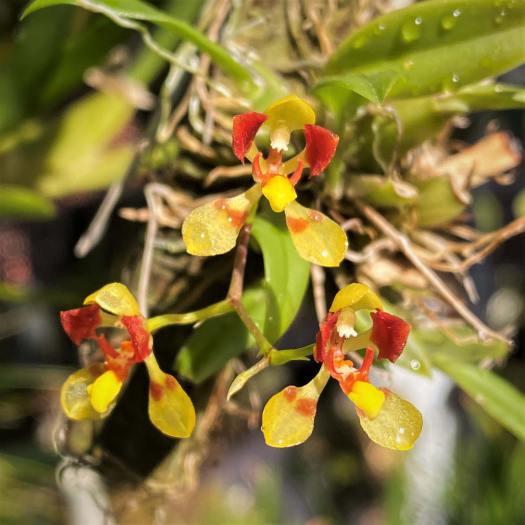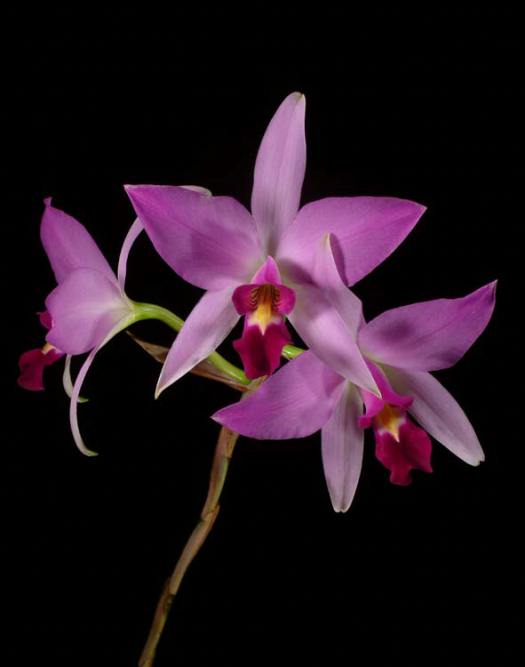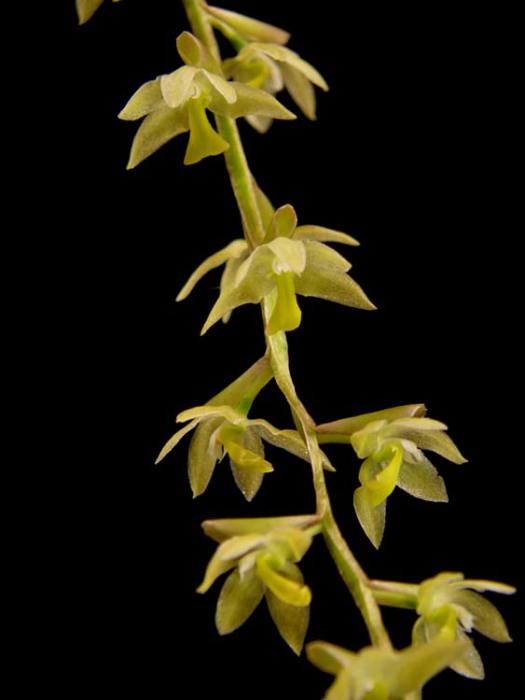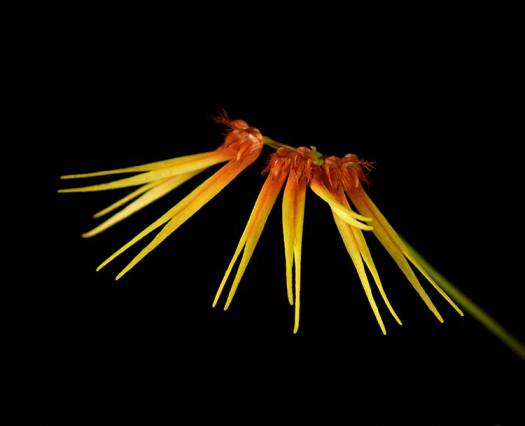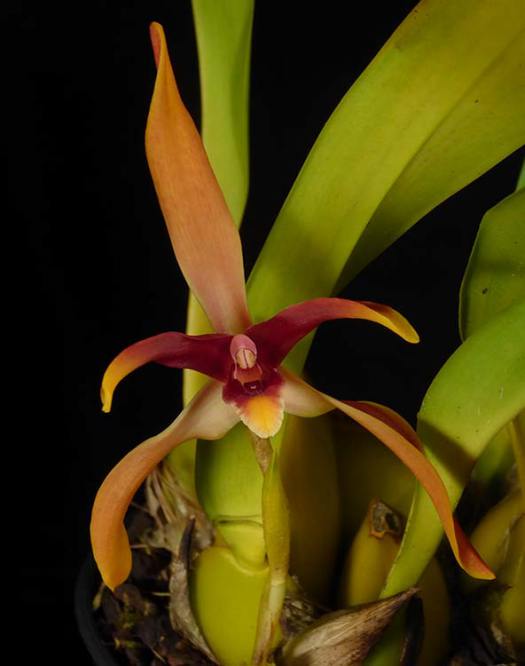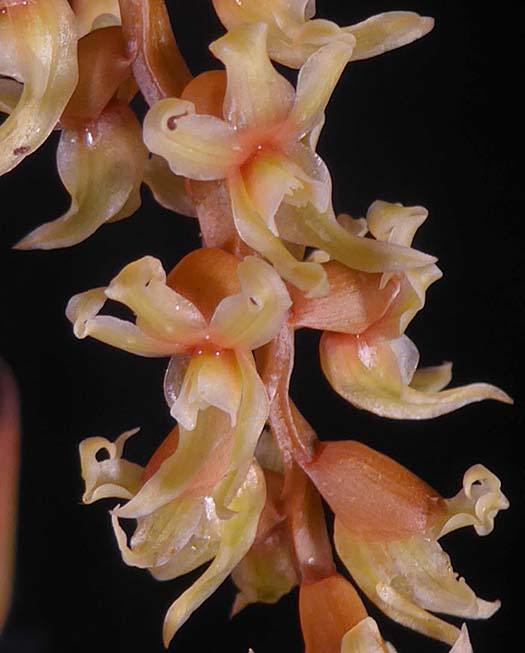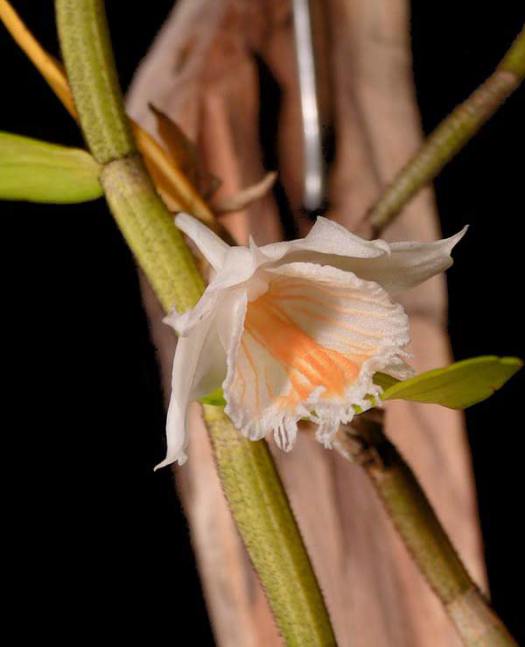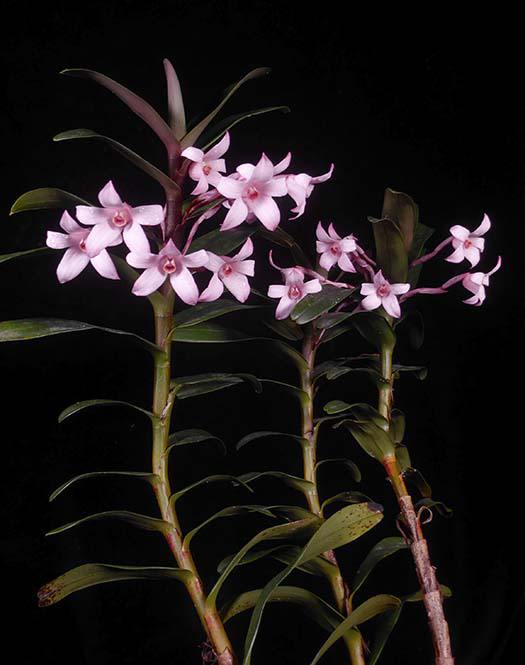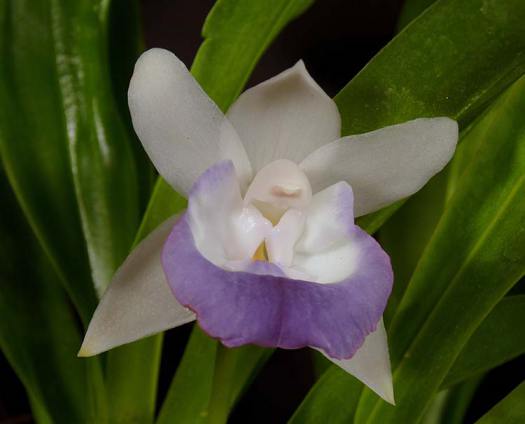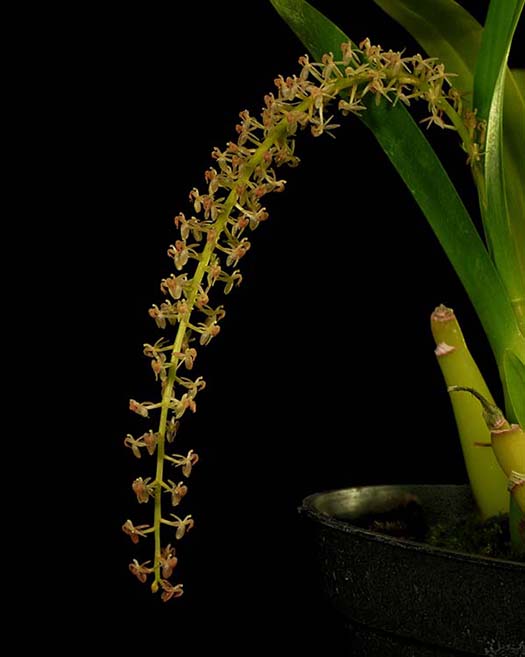December 2019
From Scott McGregor:
|
|
Angraecum danguyanumA tiny Angraecum from Madagascar, but seems to grow well outside here, and the one flower I got last year turned into a dozen this year. The ¼” flowers are even fragrant, if you get very close! |
|
Bulbophyllum pardolatumA brightly colored mini with long-lasting flowers, but they only open when the sun is brightly shining and then close at night or when cloudy. Best to grow this one mounted and with bright light. |
|
Bulbophyllum tingabarinumAnother mini with pale orange flowers in an umbel with long tails. |
|
Cattleya percivaliana 'Summit' FCC/AOSA reliable holiday bloomer, except when slugs eat the buds. Alas, only two flowers this year. |
|
Encyclia (Prosthechea) radiataAn easy outdoor grower and reliable Autumn bloomer for me, showing sprays of crystalline waxy-white flowers with a candy-striped lip. The flowers are long-lasting and strongly fragrant. |
|
Coelogyne punctulata 'Kathmandu'Most Coelogynes bloom in the Spring and tend to be rangy plants that are hard to keep contained in a pot or basket. Here’s one that blooms in the Fall, looks a lot like the beautiful C. ochracea, stays compact in a pot and has a wonderful fragrance as well. Shown is one spike—the plant has half a dozen in total. |
|
Cynorkis villosaAn odd bud and flower that is fuzzy and magenta on the outside, but barely opens to show a plain white interior. This deciduous tuber grows best in sphagnum moss and should be kept on the dry side when winter-dormant. |
|
Isabelia virginalisIsabelia virginalis is an odd, mini-mini Cattleya relative with woven fibers surrounding the growths and needle-like leaves. The buds are hidden within the braids until suddenly the whole plant is covered with 1/2" flowers, which subsequently disappear as quickly as they appeared. This species blooms reliably for me every November. An interesting plant even when not in bloom. |
|
Laelia anceps ('Royal Flush' x 'Deja Vu')The first Laelia anceps of the season (for me)! This line-bred clone has especially nice color, form and size. |
|
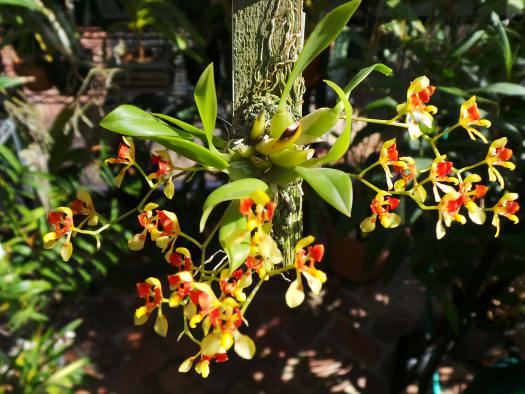
Oncidium coloratum (Gomesa colorata)A small twig epiphyte with long-lasting flowers that are proportionately large for the plant. |
|
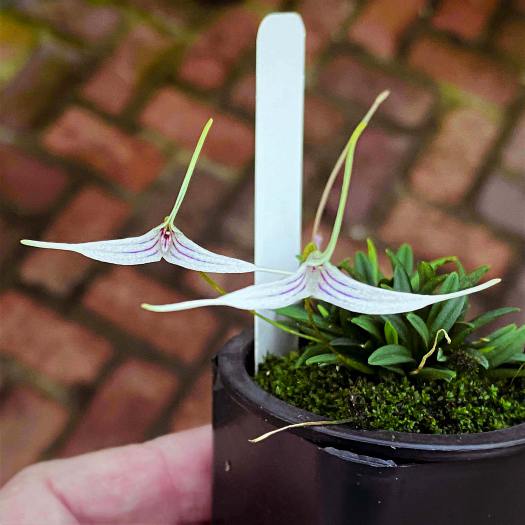
Trisetella hoeijeriThis cheerful mini grows in a 1” pot but has 2-3” flowers! It grows well outside with good water and even moisture. |
|
Maxillaria dilloniiA larger-flowered Maxillaria—this specimen is in a 10” pot for size reference. The flowers are very waxy and of heavy substance, and they last a couple months, but sadly they aren’t fragrant. I believe this is one of a few Maxillarias that belongs in every outdoor collection (in addition to tenuifolia, sophronitis, and schunkeana). |
|
From Roberta Fox:
|
|
Outside in the Back Yard: |
|
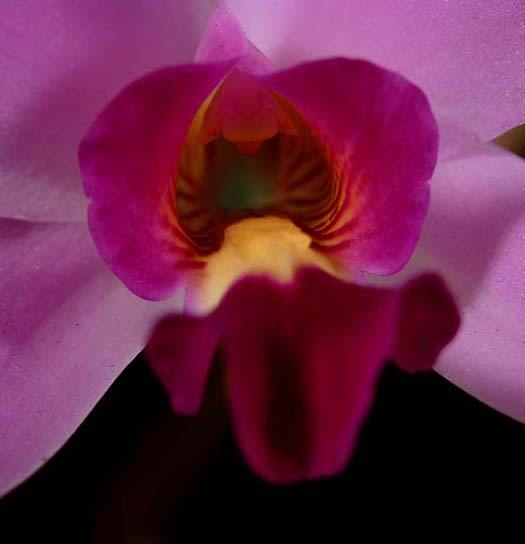 |
|
Laelia anceps ('Blumen Insel' x 'Irwin's')This is my first L. anceps of the season. I love the dark lip. I suspect that L. anceps var. guererro is involved in its background. Probably because of the cool summer, my L. anceps are running a month later this year than last. But that means that I'll have some into January or even February. |
|
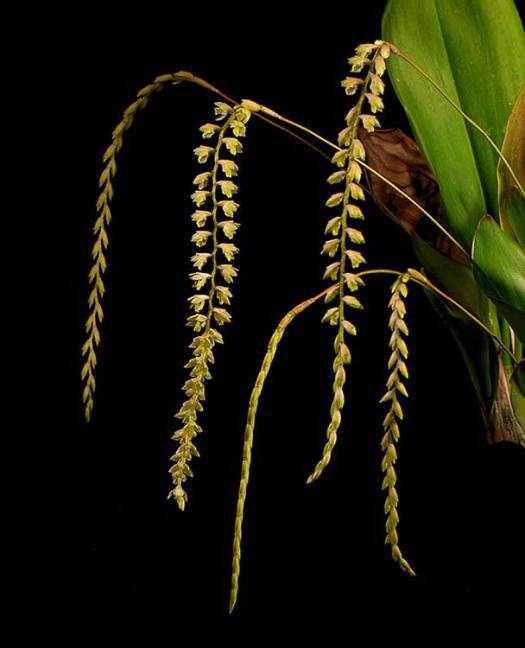
Dendrochilum cobbianumA reliable and prolific bloomer. The inflorescences have a delicate quality. |
|

Bulbophyllum (Cirrhopetalum) hirundinisGrows shady and damp. It bloomed a few months ago, as well. |
|
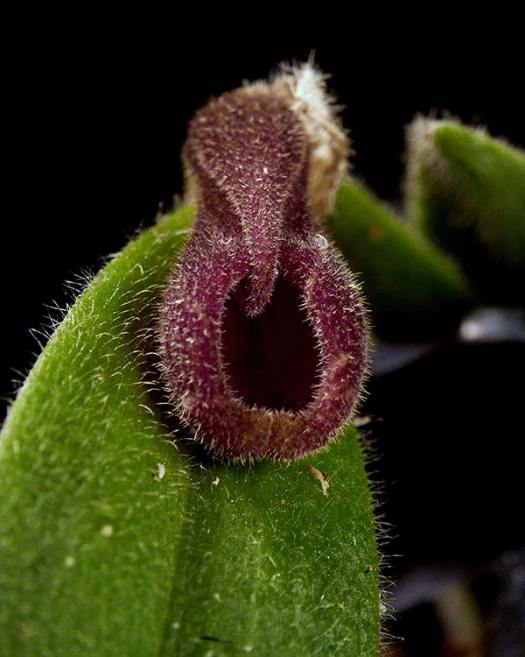
Dresslerella caesariataThe genus has weird, hairy flowers and hairy leaves. This one may be the weirdest. I think this is the most flowers that I have had at one time on the plant. Shady and damp. |
|
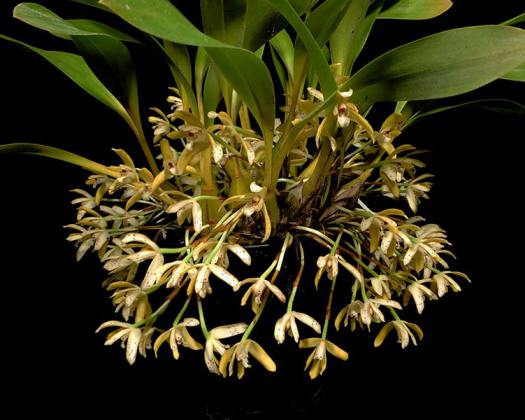 Maxillaria ubatubanaThis flower machine is related to Max. picta, but has smaller flowers, and blooms in the late fall where Max. picta blooms in spring. |
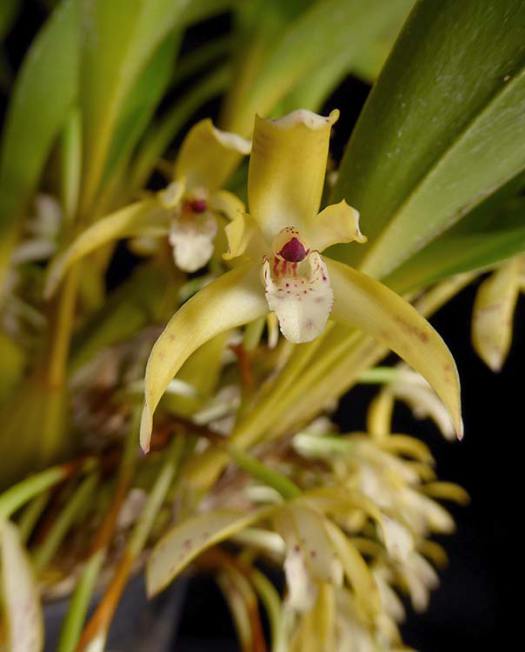 |
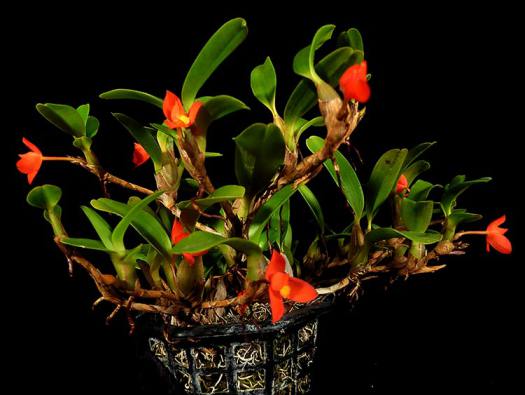
Maxillaria sophronitisThis can produce the occasional flower almost any time, but two or three times a year produces a brilliant flush bloom. |
|
Caucaea olivacea (rhodosticta)First bloom for me. The plant is on the scrawny side, but hopefully, I have figured out how to satisfy it so that it will get stronger. |
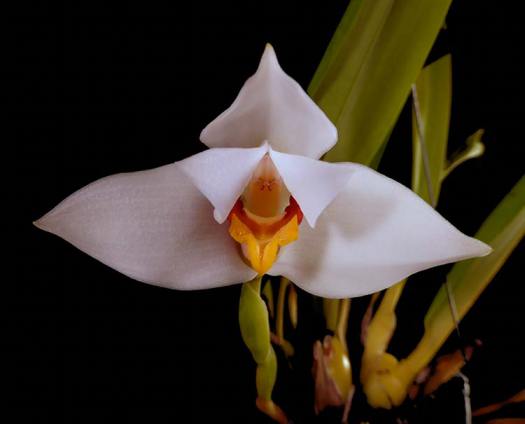
Maxillaria lehmaniiOne of the larger-flowered Maxillarias. Flowers have heavy substance. There are several more buds, and I hope that I get multiple flowers open at onece - these sometimes just open one at a time - not as spectacular, but certainly extends the blooming season. |
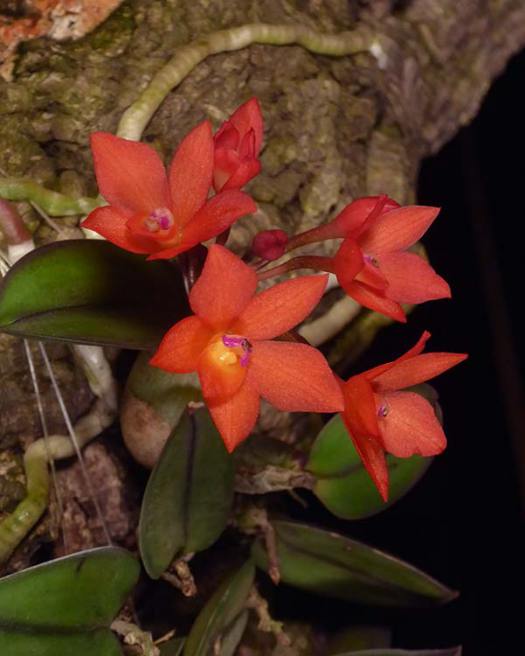 Sophronitis cernua ssp. mineiraCompared to other S. cernua, this one produces an inflorescence with multiple flowers instead of just one or two. It has been a very strong grower, having taken over the mount in just a few years (I got it bare-root) |
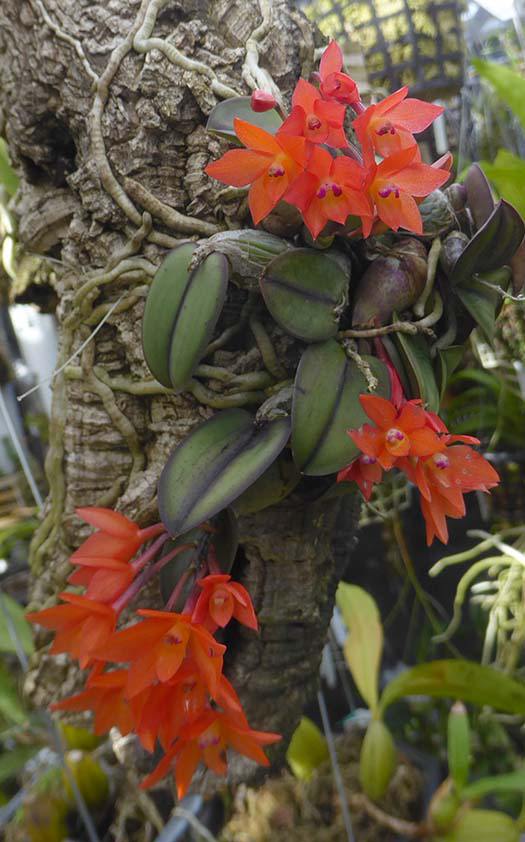 |
Dendrobium serratolabiumLike many Dendrobium, it blooms on older, leafless canes. This is in a small basket with just a little, loosly-packed sphagnum, so it dries out quickly. I don't particularly dry it out in winter, just cut back watering in general. |
|

Maxillaria tonsbergiiFlowers with heavy substance and sunset colors, and also extremely fragrant. What's not not to love?
|
|
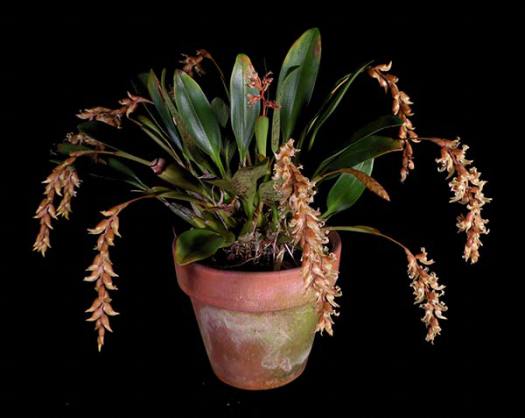 Dendrochilum cootesiiA miniature in a 3 inch pot. The flowers are relatively large for the genus. They are arranged on the inflorescense in a spiral (difficult to capture in a two-dimensional photo), and the individual flowers have curly petals. |
|
Dendrobium longicornuFlowers can appear either on leafed or leafless canes. |
|
 |
Cymbidium dayanumSometimes this species blooms in late summer or early fall. It's a bit late this year. It puts on a nice display of pendant inflorscences. |
Outside in Spring, Summer and Fall. Into the greenhouse in winter. |
|
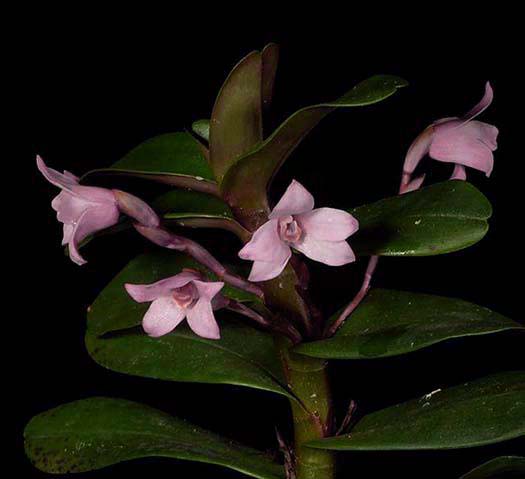 |
|
Maxillaria scalariformisAndy Phillips grows these outside all year around, and they grow fabulously. I have substantially the same climate, but I have lost several of these during the winter. It's important that they be kept damp, but I always ended up with rot. He seems to have a perfect microclimate for them. These plants come from Panama, where it is fairly warm. After two or three years of moving these into the greenhouse in the winter, I can say that this was successful. They bloom better when they are outside the rest of the year, but a bit of winter protection seems to be necessary at my house. |
|
 |
|
Catasetum fimbriatumAll of my Catasetinae live outside while nights stay above about 55 deg. F. That is approximately April to the end of October. They seem to benefit from the brighter light and better air movement outside. Also, when they are fully leafed-out, they take up a lot of room. During winter dormancy, with no leaves. there is room for them in one end of the greenhouse, which I can keep dry. Right now things are a bit tight, since many of them still have leaves, but nights are cold enough that they need to be protected. Another month, and most will be dormant and leafless. |
|
In the greenhouse... |
|
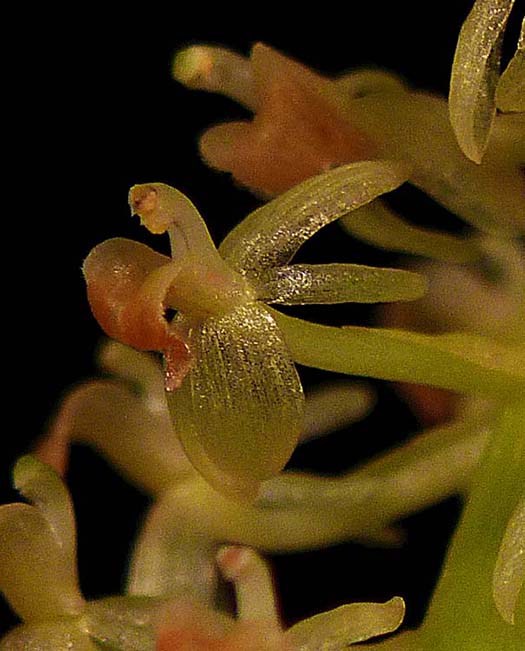 |
|
Liparis parvifloraGraceful, feathery inflorescences. Flowers are tiny (1/8 inch or smaller) but very beautiful. |
|
 |
 |
Brassavola subulifolia (cordata)Smaller flowers than B. nodosa, but many more of them. Night-fragrant. |
|
